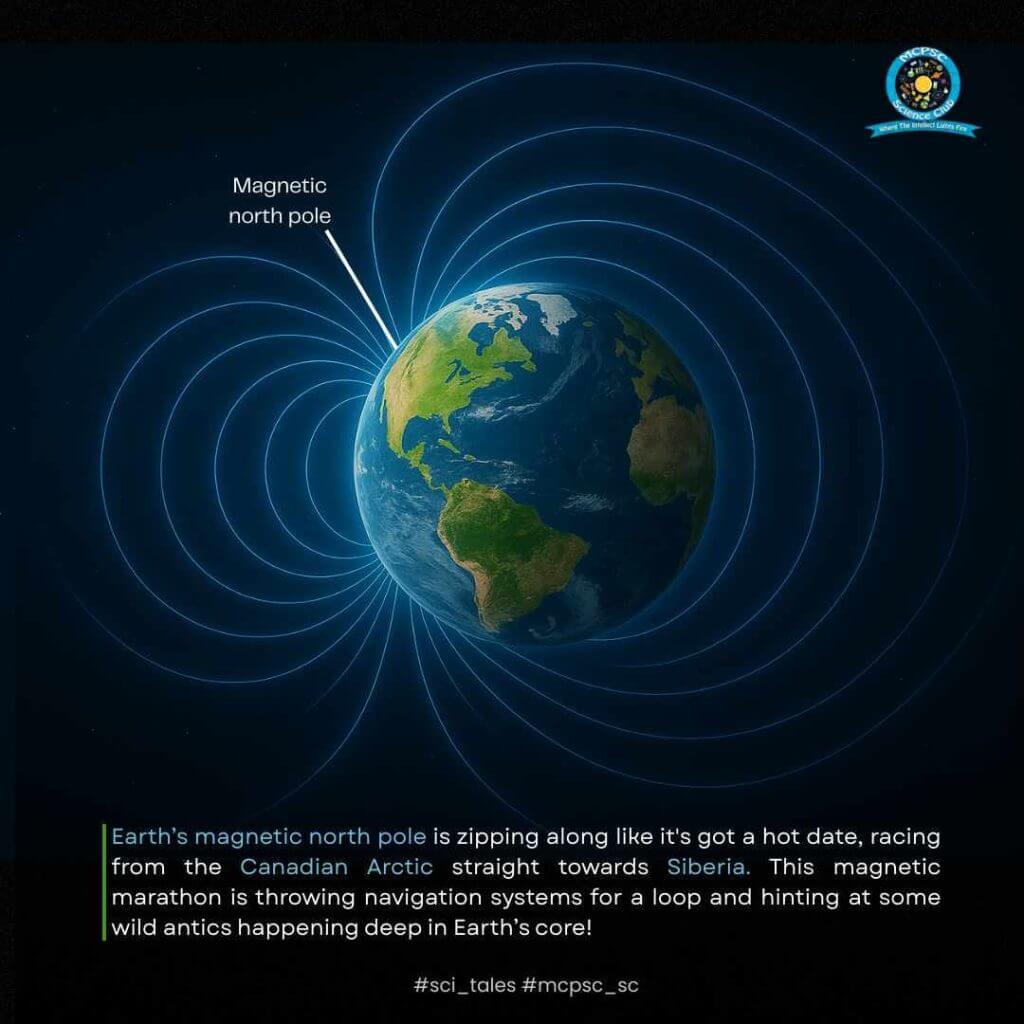
The Magnetic North Pole is not fixed, it moves due to dynamic flows of molten iron and nickel deep within Earth’s outer core. For decades, this drift was slow and steady, but over the past 20 years, it sped up dramatically, racing across the Arctic from northern Canada toward Siberia at speeds of up to 50 kilometers (31 miles) per year. Now, researchers from NOAA (U.S. National Oceanic and Atmospheric Administration) and the British Geological Survey have released an updated version of the “World Magnetic Model” (WMM), a critical dataset used globally for navigation in aviation, maritime operations, defense, mapping, and even smartphone compasses. This new 2025 update shows that the pole’s speed has slightly slowed to about 35 kilometers (22 miles) per year, marking the biggest deceleration scientists have ever observed. The shift is believed to be influenced by two large magnetic “lobes” under Canada and Siberia that affect Earth’s magnetic field behavior. Why does this matter? Magnetic drift can throw off navigation systems by as much as 150 km if models aren’t updated. While most phones and consumer devices update automatically, industries like shipping, aerospace, and military defense rely heavily on precise and regularly updated magnetic data. The 2025 WMM also introduces a higher-resolution magnetic map, providing more than 10 times the detail of previous models. This ensures better accuracy for all modern systems dependent on magnetic orientation.
